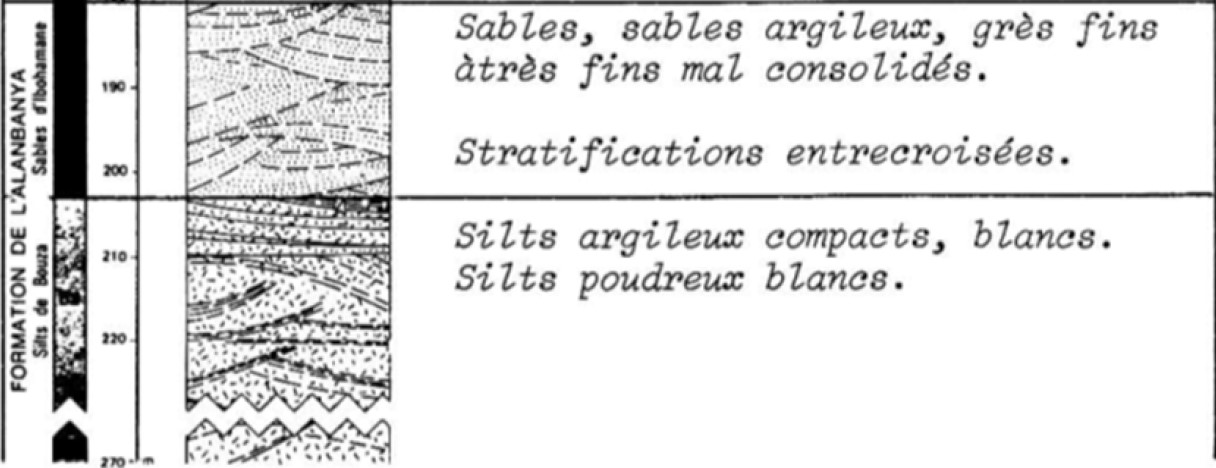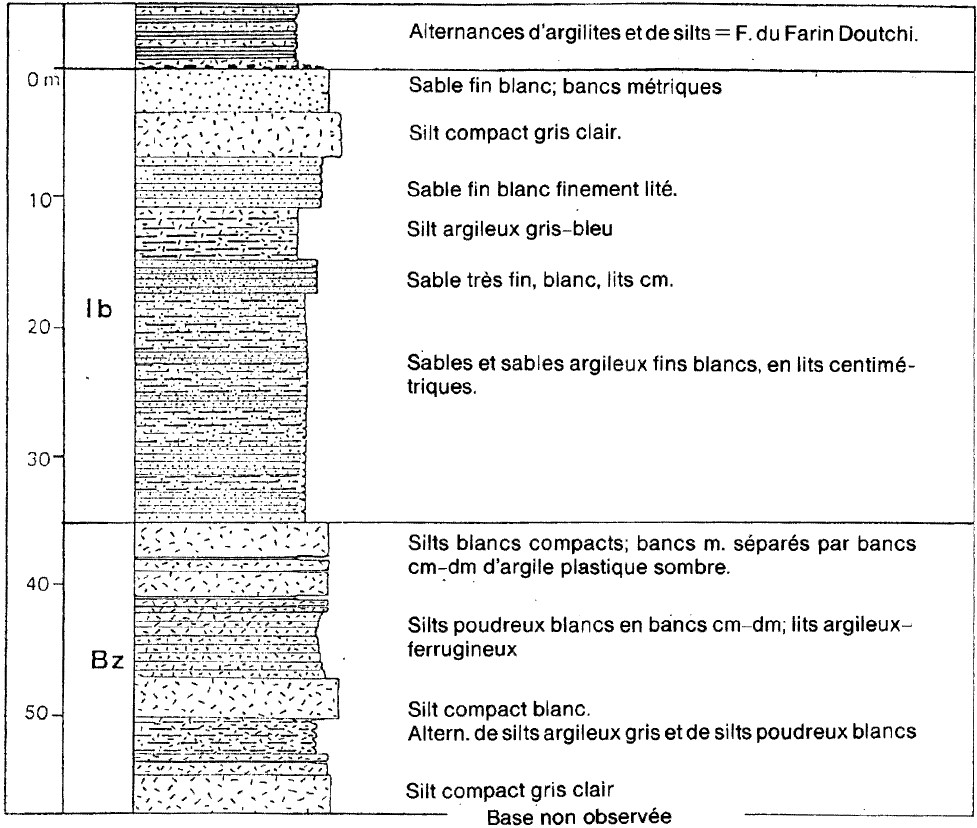Alanbanya Fm
Type Locality and Naming
Majias Gr. The formation occurs east of the 5°45' meridian. It constitutes the ravine slopes of the Alanbanya valley east of Keita. The two Members that can be distinguished in most of the Ader Doutchi are defined in Ibohamane and around the town of Bouza.
References: Jones, 1948; Greigert, 1966; Kogbe, 1973, 1979; Hanon, 1984, 1990; Dikouma, 1990; Rat et al., 1991; Zaborski & Morris, 1999; Moumouni et al., 2019; Laouali-Idi et al., 2019, 2021.
Synonym: Alambanya (misspelling); “Terme 1" of Greigert (1966); Lower Sandstones and Mudstones; Equivalent(s): Taloka Fm in the Sokoto sector of Nigeria. The Taloka Fm is also called the Lower Sandstones and Mudstones.
Lithology and Thickness
In the Dakoro area of Niger, the Alanbanya Formation consists of white, fine-grained friable sandstones and siltstones with thin intercalated mudstones and carbonaceous shales. The formation does not outcrop in the Kao region, where it has, however, been recognized in the subsurface (Greigert, 1966). It is characterized by a fine grain size: clays and silts or sands with plant debris and vertebrae remain, in particular crocodilians (Jones, 1948; Greigert, 1966; Kogbe, 1979). Hanon (1984, 1990) subdivides the formation of the Alanbanya into two Members based on their grain size (Fig. 1; Fig. 2):
- "Sables d'Ibohamane" upper unit (from 0 to 40 m): Fine to very fine clayey sands and sands, white or of light colors, quartzose with rare white mica platelets. Angular, unworn grain, generally between 50 and 200 microns. Beds 3 to 20 cm thick are separated by millimetric beds of hardened ferruginous clays; the top of the beds truncated by the lower surface of the next bed, forming large-scale, low-angular, cross-bedded stratifications. Parallel millimetric laminations are underlined by color zoning. At the top of the member are 2 or 3 huge and regular metric banks (1 to 4 m) of homogeneous white silt or centimetric bedding.
- "Silts de Bouza" lower unit (from 100 to 130 m), silts and silts clayey white, pink, homogeneous, compact or powdery; Metric beds with non-parallel boundaries (erosion of the upper surfaces of the beds) separated by dark gray or khaki clay beds. Isolated beds of fine sand.
Its thickness is 150 m.
[Figure 1: Lithostratigraphy of the Alanbanya Fm. (Laouali-Idi et al., 2019)]
[Figure 2: Lithostratigraphy of the Alanbanya Fm at Ibohamane-Téléléguel and the valley of Alanbanya (Hanon, 1990)]
Relationships and Distribution
Lower contact
Underlying unit is the Ibeceten Fm or Doutchin-Zana Fm
Upper contact
Overlying unit is the Farin Doutchi Fm
Regional extent
Iullemmeden Basin
GeoJSON
Fossils
Plant and crocodile remains, some calcareous beds containing bivalves, gastropods and ostracods at the base of the formation.
Age
Depositional setting
It is of continental to littoral origin. At the base of these deposits with an evident continental seal, some authors report the presence of lake or marine levels (Jones (1948); Greigert (1966)). Bivalves, gastropods and ostracods at the Formation base, evidence a lacustrine environment. Start of the T3 transgression
Additional Information

